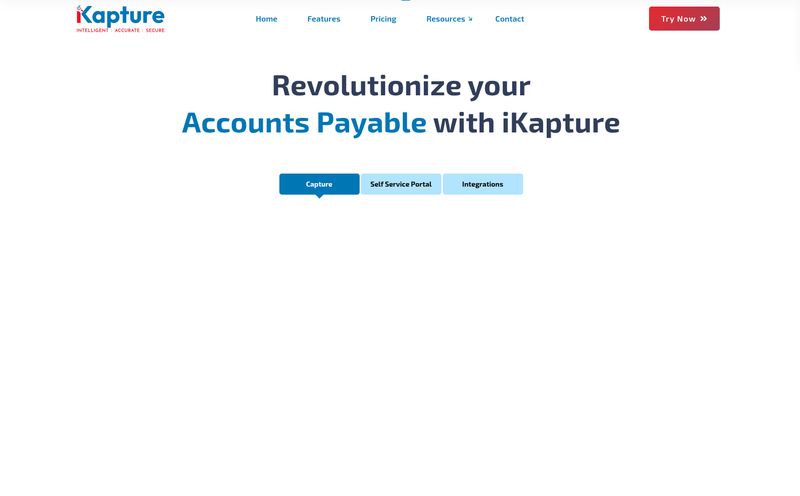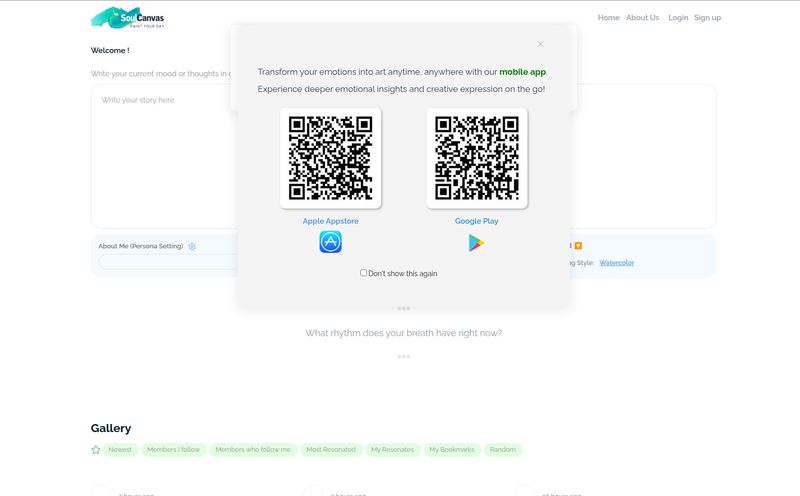If you’re like me, your inbox and social feeds are a constant firehose of “the next big thing” in AI. Every other day there’s a new tool that promises to revolutionize how we write, code, and create. It’s exhausting, right? Most of them are just thin wrappers around OpenAI's API. So, when I first heard about HeroML, I’ll admit my skepticism was at an all-time high.
Another “game-changer”? Sure. But the term “AI workflow language” caught my eye. It wasn't just another prompt-in-result-out box. It suggested something more… structured. Something repeatable. As someone who spends half their day trying to coax consistent results out of various AI models, the idea of a proper language for it was intriguing. So I decided to put on my explorer's hat and see what was what.
So, What Exactly Is HeroML Supposed to Be?
Let's break it down. HeroML isn't a chatbot. It's not an image generator in itself. It’s a language. Think of it like this: if using ChatGPT is like randomly throwing ingredients in a bowl and hoping for a decent meal, using HeroML is like having a detailed, step-by-step recipe. You define the process, the steps, and the variables to create a predictable and repeatable AI-powered workflow.
The goal is to build custom AI tools for specific tasks, whether that's generating marketing copy, translating technical documents, or even creating consistent AI art. You write your workflow in HeroML, and then you can apparently deploy it on their proprietary “Hero platform.” It's a system built for people who want to move beyond one-off prompts and start creating actual, reliable AI-driven processes.

Visit HeroML
The Real Goldmine: Those 4,000+ Prompt Libraries
Now, this is the part that made me lean in. HeroML comes with access to over 4,000 free prompt libraries. Let that sink in. For anyone who's spent hours, or even days, trying to perfect a prompt to get just the right tone, style, or format, you know that a good prompt is basically digital gold. This isn't just a feature; it's the main event.
These libraries are apparently tailored for professionals—software engineers, designers, content creators, you name it. The idea that I could grab a pre-built, tested prompt for generating, say, a technical SEO audit summary or a series of social media posts in a specific brand voice is… well, it’s incredibly appealing. It’s a massive head start that cuts down on that painful trial-and-error phase that we all know and loathe.
Building with HeroML: The Good, The Bad, and The Puzzling
Of course, no tool is perfect. And with HeroML, there are a few things to consider before you jump in. It’s a mix of some genuinely smart ideas and some… question marks.
The Upside of a Dedicated Language
I love the idea of bringing order to the chaos of prompt engineering. Using a proper language means you can version control your AI workflows (a godsend for teams!), share them easily, and build complex, multi-step processes that just aren't feasible with a simple chat interface. For developers and automation experts, this is a familiar and powerful paradigm. It turns prompting from an art into a science, and I'm here for it.
The Inevitable Learning Curve
And here’s the rub. It’s a new language. Another thing to learn. The documentation and community around it will have to be top-notch to get people on board. I remember the early days of learning basic HTML, and it felt like a mountain. If HeroML is too complex, it could be dead on arrival for anyone who isn't a hardcore developer. The success of this whole thing hinges on how accessible they make teh language. The big question is: is the payoff worth the time investment?
Effectiveness is always going to be tied to the quality of the prompts. Garbage in, garbage out (GIGO) is the oldest rule in tech, and it applies more than ever with AI.
The Mysterious “Hero Platform”
This is my biggest hang-up. The information about the Hero platform, where you actually deploy these workflows, is surprisingly thin on the ground. The website is minimalist to a fault. Is it a cloud service? Do you host it yourself? What does the interface look like? Right now, it feels a bit like a digital black box. This lack of transparency is a bit concerning for a professional looking to integrate a tool into their stack. It could be that they're in a quiet beta, but a little more info would go a long way in building trust.
Who Should Actually Bother with HeroML?
So, who is this for? I don't think this is for the casual user who just wants to generate a poem about their cat. This is for the power user. The professional.
- Software Engineers: Imagine creating a tool that automatically generates documentation or unit tests based on your code. That's a powerful use case.
- Content & SEO Teams: Building a workflow to generate meta descriptions, article outlines, or keyword-optimized paragraphs at scale, all while maintaining a consistent brand voice. Yes, please.
- Designers: Creating workflows that produce AI art with a consistent style, character, or color palette for a project. This could solve one of the biggest frustrations with AI art generation.
- Automation Specialists: Anyone working with Zapier or Make will see the potential here. It’s another powerful block to add to an automated business process.
If your job involves repeatable creative or logical tasks, HeroML is at least worth keeping on your radar.
A Quick Look at the Pros and Cons
To put it all in one place, here's my quick take on the highs and lows.
| The Good Stuff | The Not-So-Good Stuff |
|---|---|
| Huge library of 4,000+ free prompts is a massive time-saver. | Requires learning a whole new language (HeroML). |
| Brings structure and repeatability to AI workflows. | Very limited information available on the Hero platform itself. |
| Supports both advanced text and AI art generation. | Effectiveness is entirely dependent on the quality of prompts. |
Let's Talk Brass Tacks: What's the Price?
Here's the million-dollar question, and unfortunately, I don't have an answer. At the time of writing this, there is zero public information about pricing for HeroML or the Hero platform. This could mean a few things. It might be in a free, open beta. It could be an open-source project. Or, they might be operating in stealth mode, only onboarding select enterprise clients. My gut tells me we'll eventually see a tiered model, maybe a free plan for individuals and paid plans for teams, but for now, your guess is as good as mine.
Frequently Asked Questions about HeroML
Is HeroML a replacement for ChatGPT or Midjourney?
Not at all. Think of it as a layer on top. HeroML is the language you use to control and orchestrate AI models, which could very well be models like GPT-4 or Stable Diffusion under the hood. It’s the recipe, not the ingredients or the oven.
Do I need to be a programmer to use HeroML?
It will almost certainly help. While the language might be designed to be simple, the very concept of a structured language leans towards a developer's mindset. I'd expect non-programmers to face a steeper learning curve, but the prompt libraries might make it much easier to get started.
Are the prompt libraries really free?
From all available information, yes. Access to the 4,000+ prompt libraries seems to be one of their core value propositions, likely used to attract users to their ecosystem.
Where can I find more information about the Hero platform?
That's the big mystery! The best place to look would be their official website, but as I've mentioned, details are sparse. Your best bet is to sign up for updates if possible and keep an eye on communities where developers and AI enthusiasts hang out.
Is HeroML better for text or AI art?
It's built for both. The tool's strength for one or the other will really depend on the depth and quality of the prompt libraries available for each domain. If there's a fantastic collection of prompts for generating photorealistic images, it will be great for artists. If the text libraries are more robust, content creators will get more value.
Final Thoughts from a Jaded SEO
So, what's my verdict? I'm cautiously optimistic. I'm tired of AI tools that are just smoke and mirrors, and HeroML, despite its mysterious nature, feels like it’s built on a solid, practical idea. The move towards structured, repeatable AI workflows is the natural next step in this industry, moving us from parlor tricks to professional tools.
The success of HeroML will come down to execution. How easy is the language to learn? How powerful is the platform? And how good are those thousands of prompts? If they can nail those three things, HeroML could quietly become an indispensable tool for a lot of professionals. For now, I'm keeping it on my watchlist. It has the potential to be a hero, but it still has to prove it's not just another zero.
Reference and Sources
While direct information on HeroML is limited, you can find more context on the importance of structured prompting in articles from industry leaders. For example, Ahrefs has discussed the nuances of using AI for SEO, which highlights the need for precise and repeatable prompting methods.
- Ahrefs Blog on AI for SEO and Copywriting
- (Note: A direct link to the HeroML platform was not readily available at the time of publication.)



